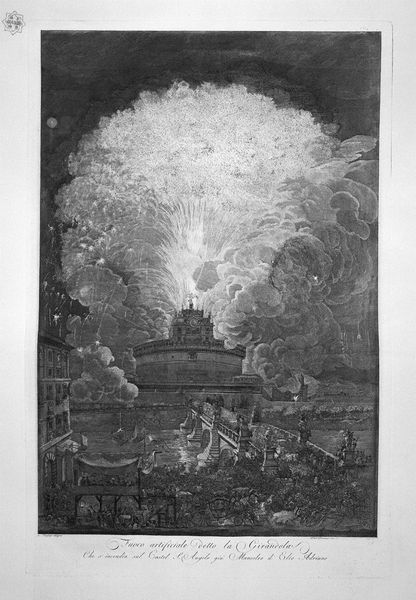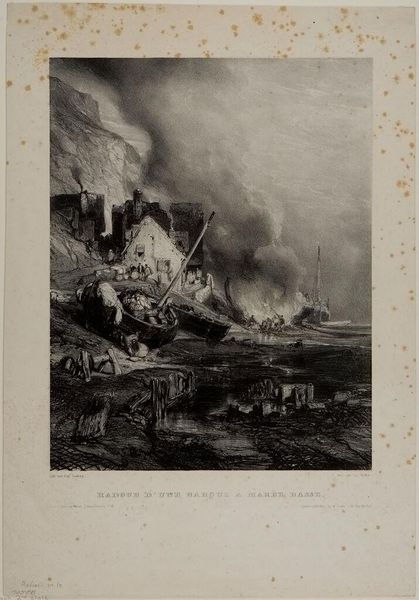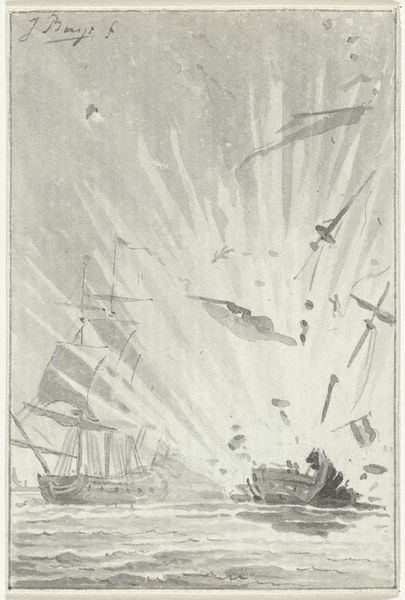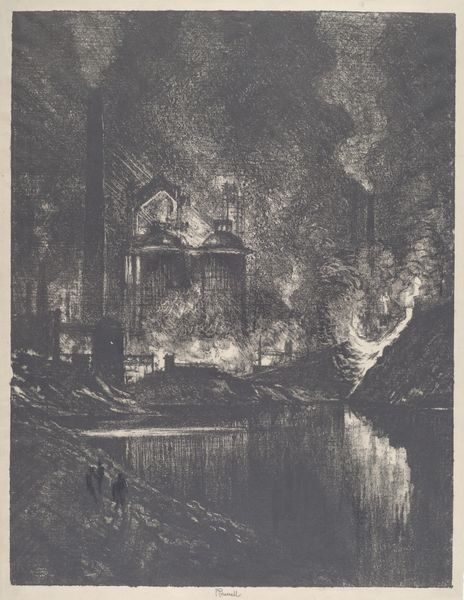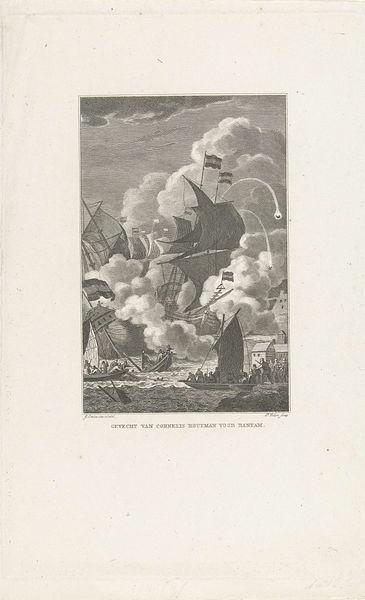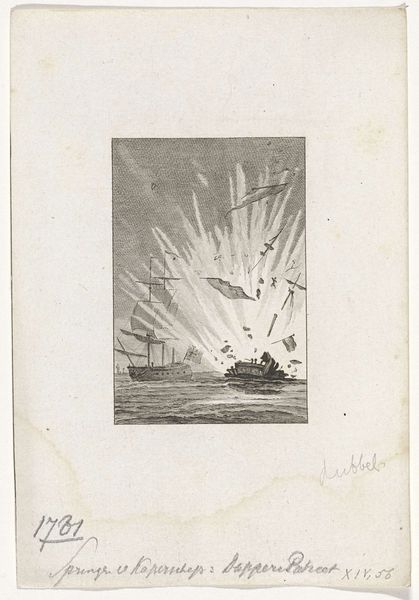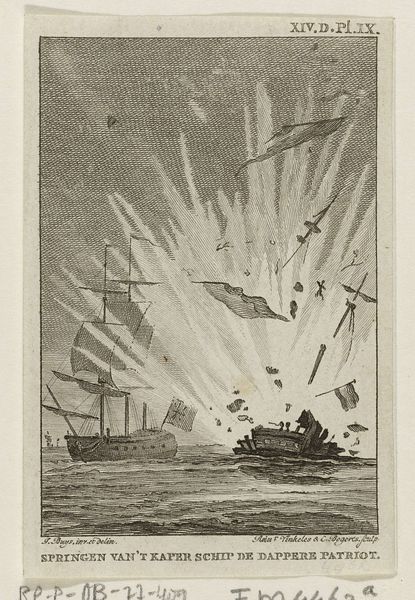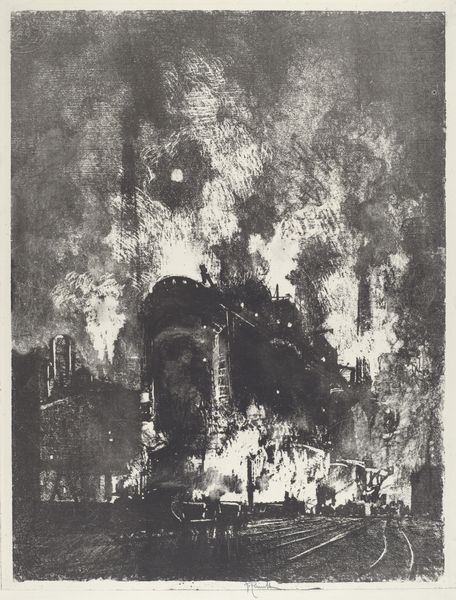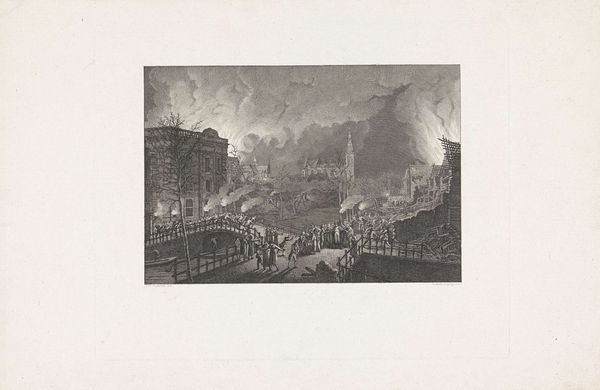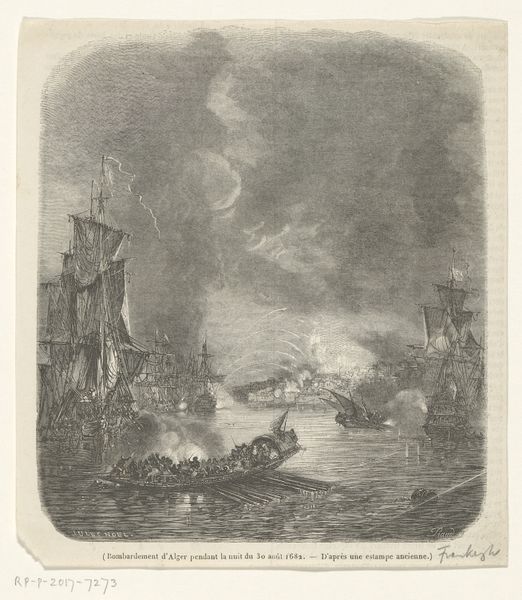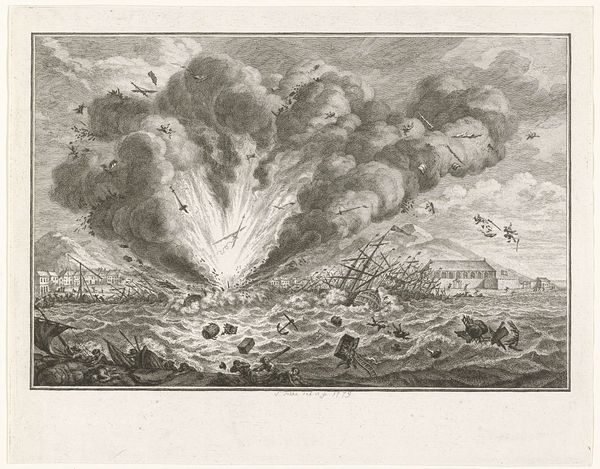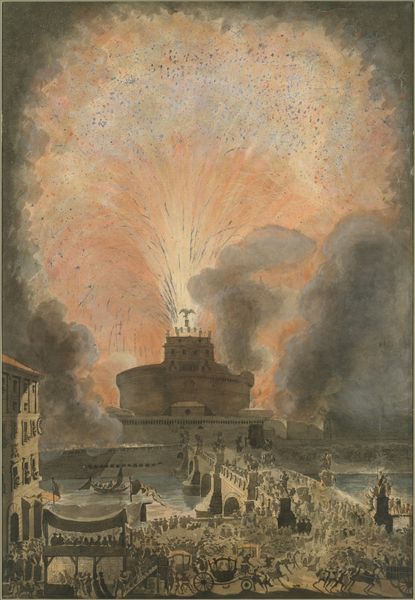
Dimensions: height 770 mm, width 513 mm
Copyright: Rijks Museum: Open Domain
Curator: Francesco Piranesi's "Girandola at Castel Sant'Angelo," dating from around 1781 to 1785, offers a spectacle of light and architecture. Executed as a print, employing both etching and engraving techniques, it's held here at the Rijksmuseum. Editor: My initial reaction is of pure spectacle. The visual rhythm is dominated by the bursting fireworks—a kind of Baroque excess playing against the stoic architecture. The stark contrast and gradations within it really grab you. Curator: The Girandola was, of course, a real fireworks display, an annual Roman tradition. Piranesi, continuing his father’s workshop and his aesthetic of reinterpreting roman traditions through art, has documented more than just a visual experience; it is a performance. The labor, not only of its production, but of those preparing the elaborate pyrotechnics – we have evidence it took months for the Girandola preparations. Editor: From a formal standpoint, note the composition. The Castel Sant'Angelo provides a stable base, and the fireworks explode upward in a dramatic, almost theatrical fashion. The tonal range is very important here. The interplay of light and dark not only models the forms but gives depth and animation. Curator: Considering it in the broader context of printmaking in the late 18th century, the commercial aspects are really intriguing. Piranesi and his studio were essentially running a souvenir factory. Views of Rome, spectacles like this—all for sale. He was deeply entrenched in material realities as much as grand visions. Editor: I can see how you appreciate those contextual layers. To me, it still comes back to form. See how Piranesi carefully uses line weight to suggest atmosphere and recession. The detail in the Castel Sant’Angelo itself contrasts beautifully with the ethereal quality of the bursting fireworks above. The architectural structure and exploding pyrotechnics seem like opposing concepts brought together as aesthetic components. Curator: Thinking about artmaking, it’s worth highlighting that printmaking in this period involves a collaboration of artisans: those preparing the copper plates, those handling the printing, and the entrepreneurial aspect, someone to bring those all together for market appeal. The circulation of these prints aided greatly in a form of early tourism for Rome, providing many views into its history to wider audiences. Editor: Agreed, a potent symbol of that era’s engagement with art and its production. Seeing how these fireworks explode beyond representation, I understand Piranesi’s approach to architecture as a construction of memory as well as of building. Curator: Indeed. It reminds me how crucial these printed images were in shaping how people consumed and understood history and celebrations. Editor: For me, stepping back, it underscores the formal capacity of Piranesi's image-making as an aesthetic representation.
Comments
rijksmuseum about 2 years ago
⋮
The <girandole> was the firework display lit from the Castel Sant’Angelo in Rome during Easter festivities. It lasted a full hour, reaching a climax at nine o’clock in the evening, with a fan-shaped shower of stars as the grand finale – the very moment Desprez depicted here. He lit up the structure, reflected in the River Tiber, with coloured printing ink.
Join the conversation
Join millions of artists and users on Artera today and experience the ultimate creative platform.

